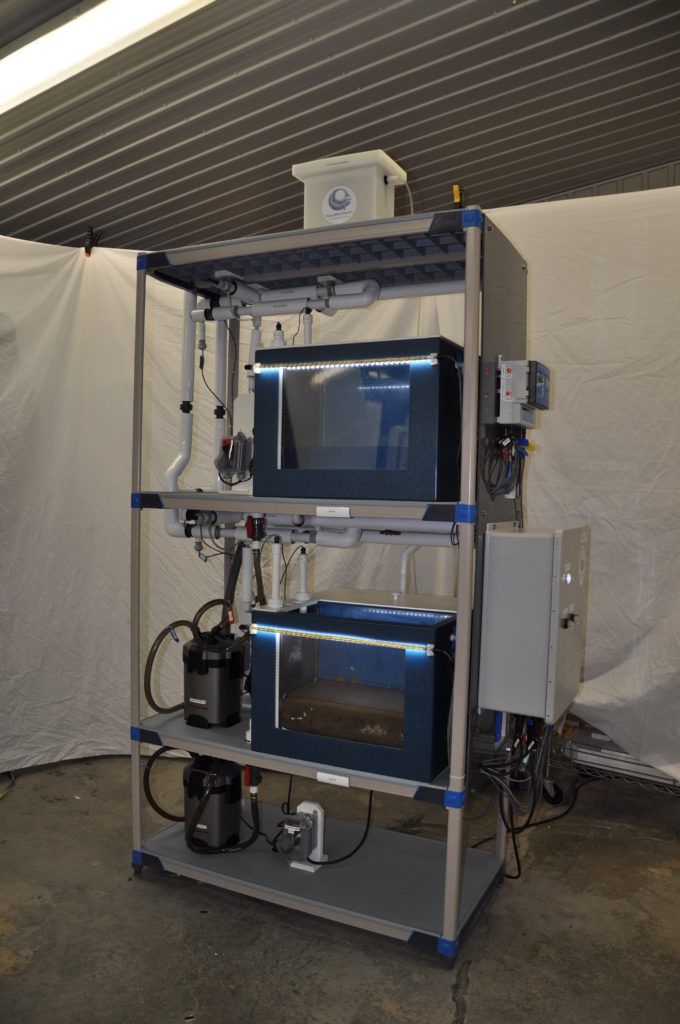Mount Allison University – Tide Simulator
Mount Allison University – Tide Simulator
Mount Allison University – Tide Simulator
Two units of two aquaria capable of replicating simultaneously all the characteristics of two independent tides (low water, high water, ebb and flow and number of successive tide cycles).
AquabioLab custom builds high quality life support systems for doing research in a totally controlled environment.
Tide Simulator aquaria are twinned such that one produces the inverse of the other (so when aquarium #1 is at high water, aquarium #2 is at low water). One Tide Monitron is shared between the two units.
The user can simulate a tide whose characteristics can change according to time. The tides (low water, range of tide, duration of flood or ebb, high water) are simulated through micro-pumps, whose operation (the magnitude, duration and rates) are programmable and variable;
The simulated tidal flow describes a sine curve, as in real life. Maximum ebb of 20 cm (± 5 mm) is generally obtained. Greater tidal ranges (for example, a difference of 50 cm in elevation) are also possible.
User can adjust the tidal range;
Designed for marine closed circuit operation, with full control over water temperature;
As many as five water exchanges of recycled water output can be obtained per hour in each aquarium, to create a gentle current as required by some species.
Mount Allison University – Tide Simulator: Flow circulation
The water flow through the unit is divided into two circuits. The first one can handle physically and biologically the water and the second allow creating the desired water level in the experimental area.
First Circuit
From the tank, the water is pumped through the canister (cartridge filter / carbon & coral filter / biofilter) and return to aquarium.
Second Circuit
A 24 VDC reversible peristaltic pump transfer water from the experimental area to the back section for create a lower tide and from the back area to the experimental section for create a high tide.
A pinch valve allows the quantity of fresh make-up water to be precisely regulated. This valve is controlled by the Enviro-monitron. The valve is capable of introducing up to 300% of the total volume of the system per day. The effluent leaves the system through the system overflow located near the aquarium.




